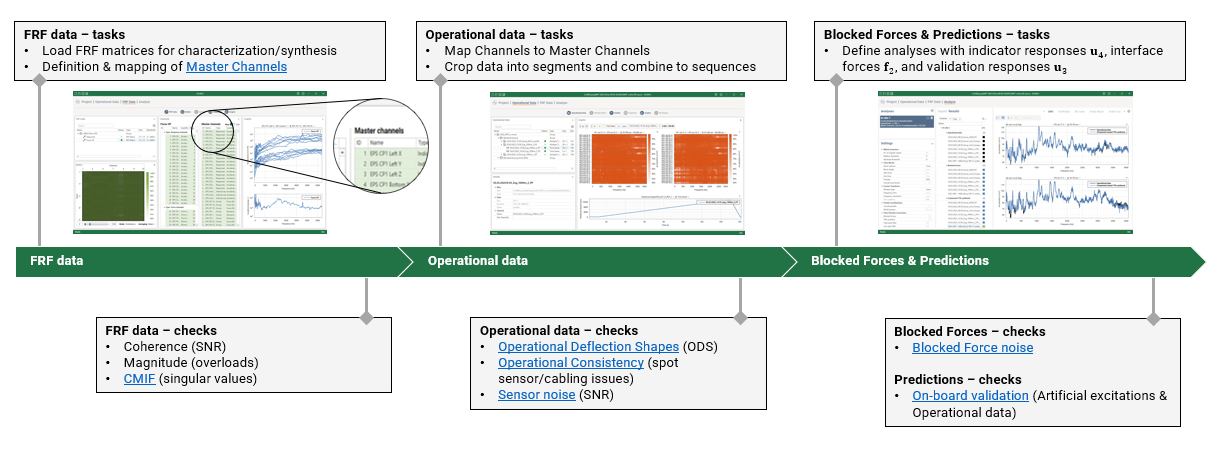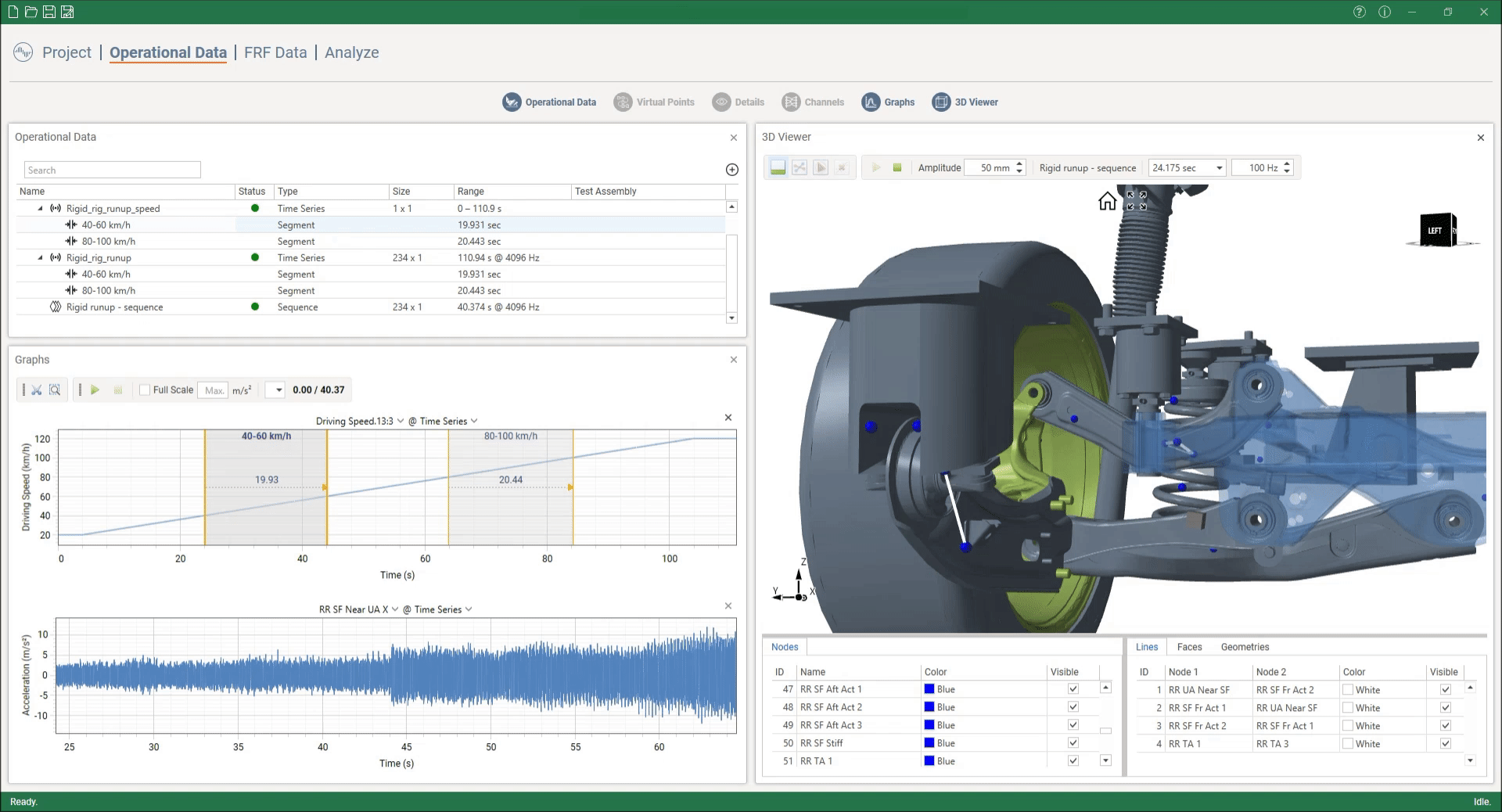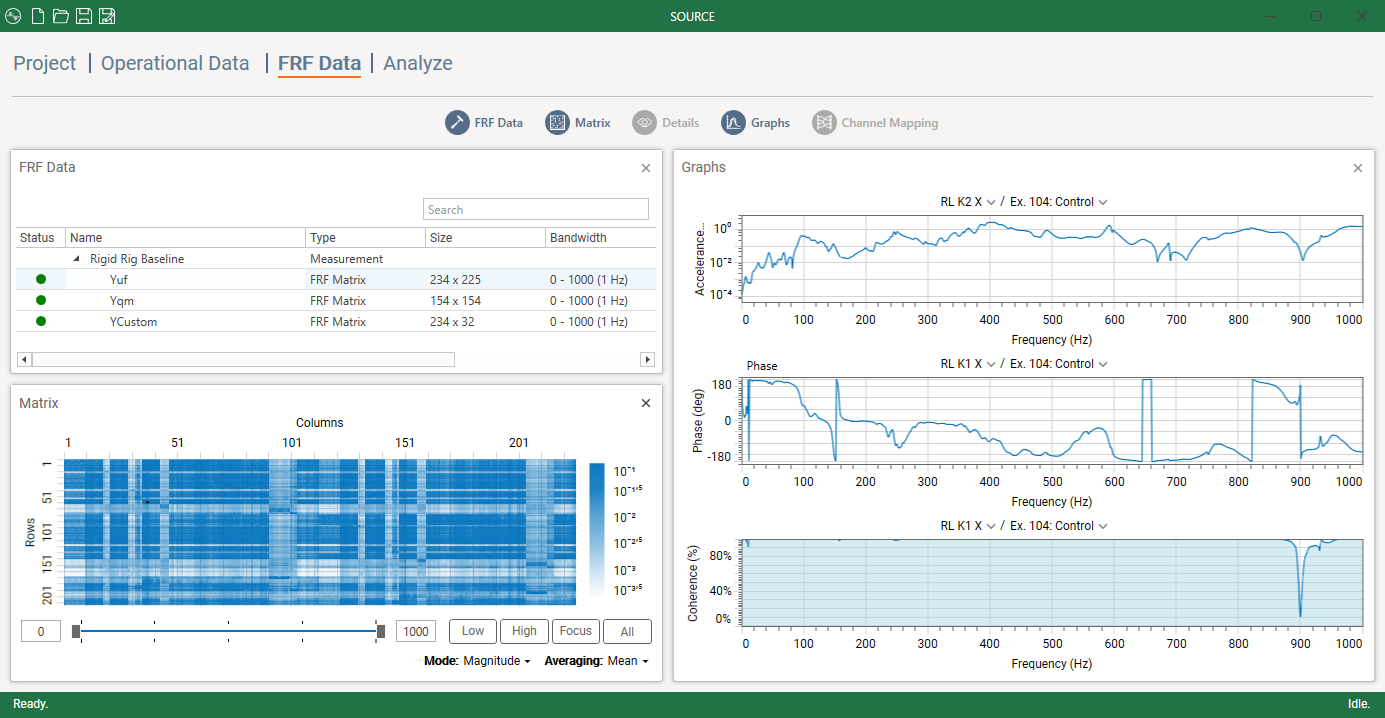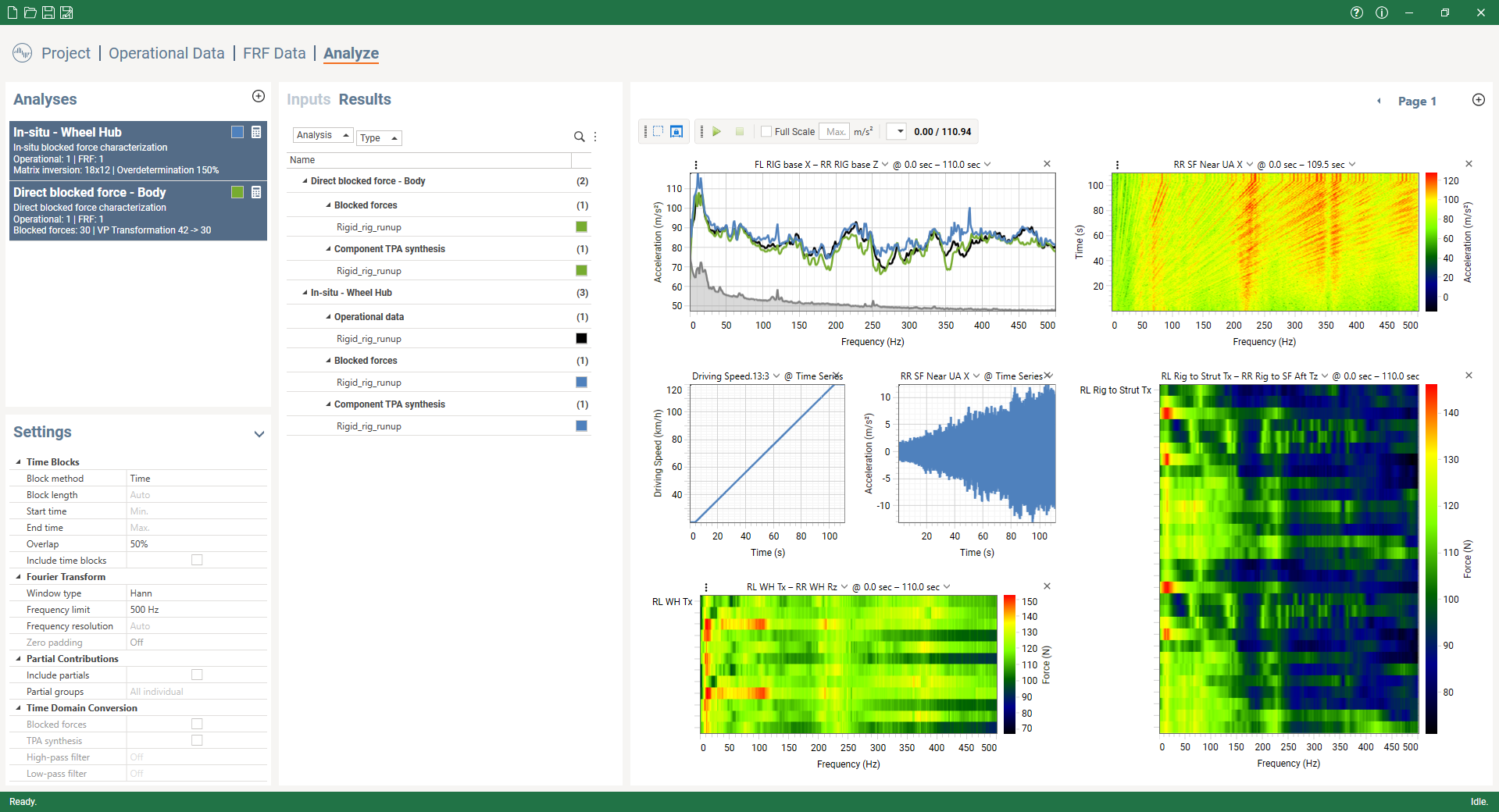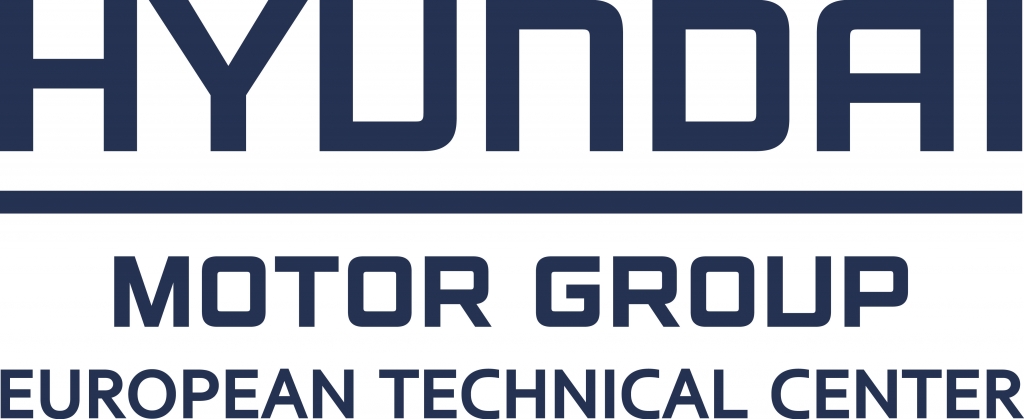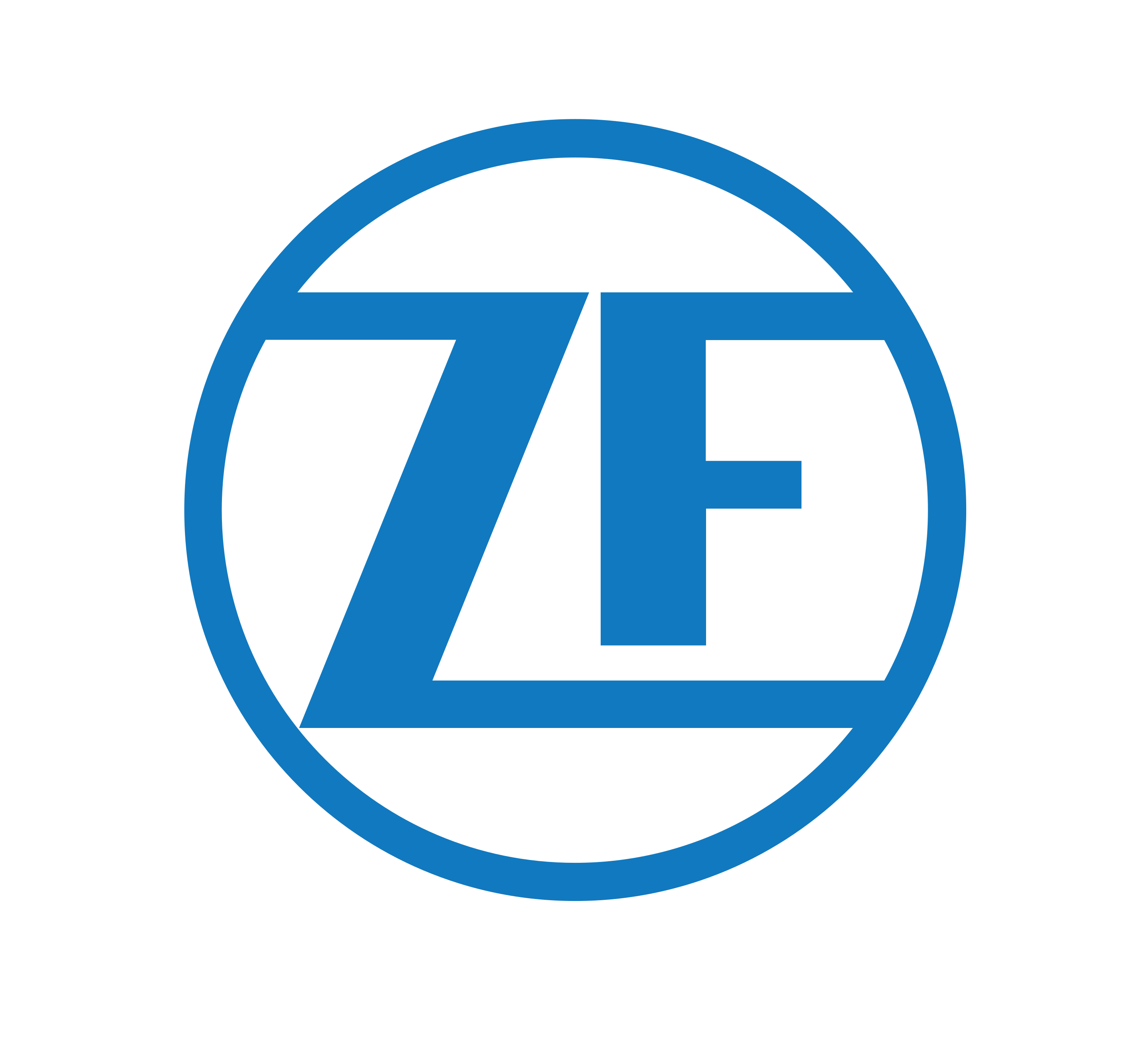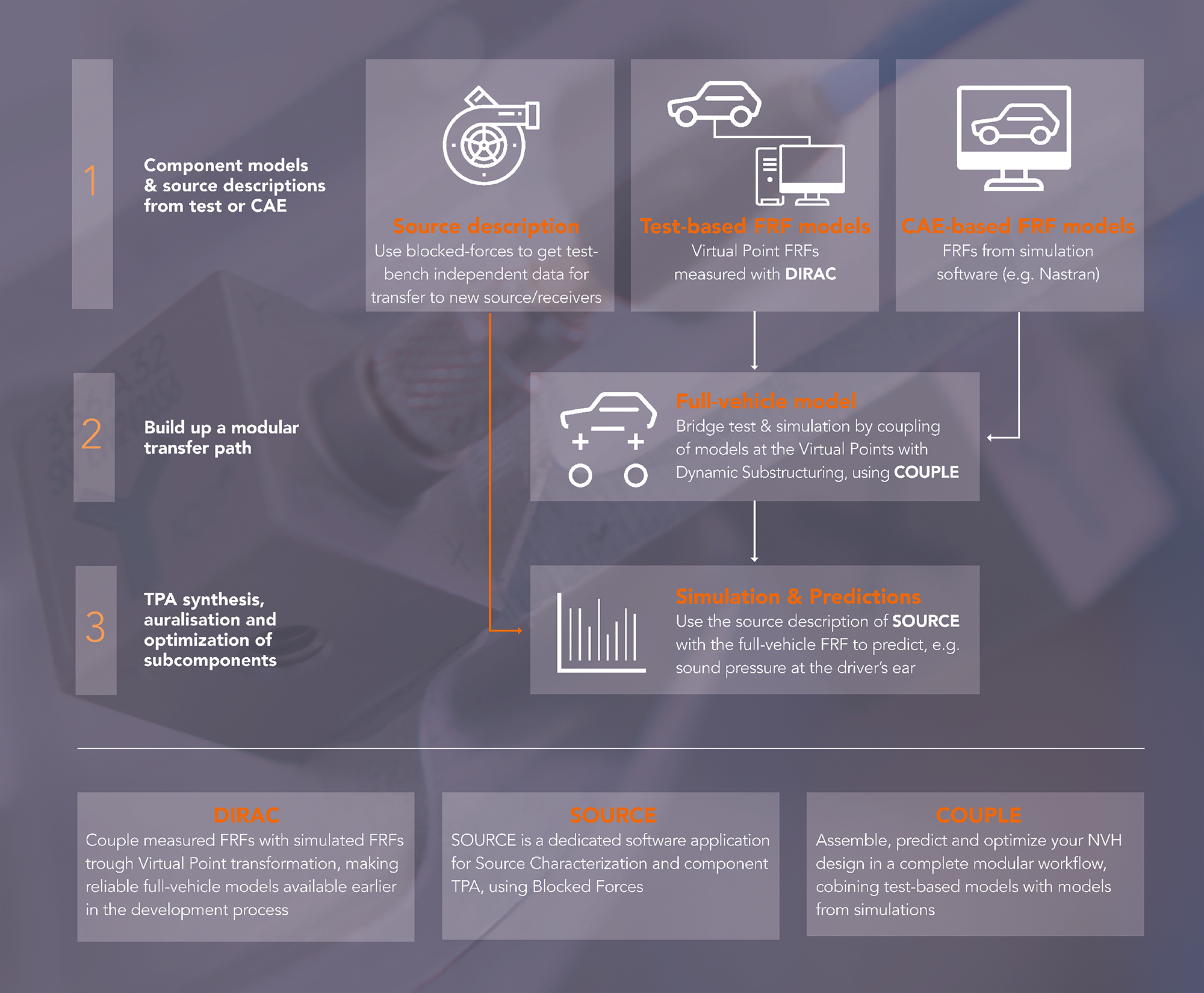Software
Accurate characterization of active sources
SOURCE is a dedicated software application for Blocked Force Source Characterization (SC) and component Transfer Path Analysis (TPA). These two topics are highly popular topics in sound & vibration engineering, as they enable a modular NVH approach. Accurate characterization of active sources, typically by Blocked Forces, requires a clear and robust workflow with quality checks at each and every step. SOURCE is the software application that enables you to do all of this. All variants of SC and TPA have been implemented in one intuitive application, designed from a clear vision towards high-quality and traceable source and TPA calculations. Results and insights generated by SOURCE fit perfectly in current CAE simulations, allowing to solve critical NVH aspects in an early phase of product development.
What to expect from SOURCE?
Handle data from any source and form
In this module, the operational data are imported & critical time sequences are extracted.
- Data import: Operational measurements are imported using native ATFX (supporting MBBM, Siemens/LMS, Head, B&K), or from DIRAC, MATLAB and UFF.
- Powerful bulk data processing: SOURCE has the capacity to handle a large batch of data. Ideal for integral data management.
- Data management: Map channels and apply previously defined tags to label your data on test assembly, operational conditions, etc.
- Edit & Playback: Split, merge and define time blocks using a full visual experience. Play back audio over speakers or headphone.
- Operational deflection shapes: Visualize and verify the quality of your measurement data.
Data quality checks ensure FRFs can be used reliably in the TPA predictions
- Data management: Map channels and apply previously defined tags to label your data on test assembly, etc.
- Matrix viewer: The graphical interface allows the user to review the data quality of the entire measurement as a whole.
Operational data and FRFs are combined to calculate Blocked Forces and TPA predictions
The Virtual Point transformed FRF/NTFs and new quality indicators allow for a deeper understanding of the results.
- Data Organization: Easily keep track of which data sets are being used in the Blocked Force calculation and TPA prediction.
- Channel matching & management: SOURCE matches channels from all your operational and FRF datasets. This way, the software can advise you on the possible SC and TPA methods.
- Improved Calculations: Employ mathematical techniques (regularization, truncation) during the matrix inversion.
- Data Visualization: The quality of the TPA prediction is confirmed using individual plots of the responses.
- Virtual Acoustic Prototyping: Create, playback, and export time series datasets of your virtual prototypes.
On this topic, there are two ISO standards, both supported by SOURCE
- Standard 1: ISO/NWIP 21955
“Vehicles — Experimental method for transposition of dynamic forces generated by an active component from a test bench to a vehicle” (Based on French standard XP R 19-701)
Main Goal: To help suppliers design suitable test setups. (Obviously: evaluate performance in target setup.) - Standard 2: ISO/CD 20270
“Acoustics — Characterization of sources of structure-borne sound and vibration — Indirect measurement of blocked forces”
Main Goal: To target setting for component specifications. (Obviously: evaluate performance in target setup.
Both standards contain valuable practical additions to the theory. The first (ISO/NWIP 21955) provides extensive guidelines for compliant interfaces and testing. The second standard (ISO/CD 20270) offers artificial excitation and on-board validation steps.
In this paper it is shown how the different approaches can be derived and compared using the general framework for Transfer Path Analysis (TPA). It is shown how one standard clearly relates to classical TPA methods (using interface forces), while the other standard adheres the component-based TPA principles (using Blocked Forces). Practical guidelines found in the standard proposals are reviewed, allowing for a qualitative comparison of the proposed procedures.
Our clients
SOURCE is a comprehensive application, therefore increasing efficiency and clarity and reducing the time spent on NVH engineering. It runs a complete Virtual Point Blocked Force analysis within 30 minutes!
Typical use cases of SOURCE include:
- Blocked Force characterization of vehicle mechatronic systems (e.g. EPS, e-compressor) measured on a component test bench, with forces and moments up to 3kHz enabled by VP FRFs.
- Operational TPA analysis on response-only data, quickly obtained and processed, seconds after the measurement.
- Combined Classical and Component TPA with both interface and blocked force source description, auralized into multiple virtual vehicles.
Combining SOURCE with DIRAC and COUPLE
DIRAC in combination with SOURCE is the most effective solution for blocked force calculation! Gather your FRF Data from your favorite DAQ systems using native ATFX import. If you use DIRAC for FRF measurements, your FRFs are already organized and processed such that high-quality blocked forces are one click away.
DIRAC + SOURCE ensures:
- Design of Experiment using the unique 3D preparation capabilities of DIRAC.
- Virtual Point Blocked Forces and Moments. This creates 6 degrees of freedom per coupling point, indispensable to capture all source characteristics.
- Transferability of blocked forces between test bench and vehicle, as the virtual points guarantee true compatibility at the connecting points.
- Higher bandwidth of validity, thanks to rotational FRFs and innovative test-based modeling features.
- More quality control in the blocked force calculation process.
Explore
More about SOURCE
Want to know more, click on the buttons below. We are happy to give a SOURCE demo, tell you more about user cases, or answer any other questions. We can recommend downloading our whitepaper on Source Characterization, including theory and example cases on modular source descriptions using Blocked Forces.

